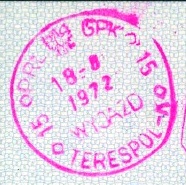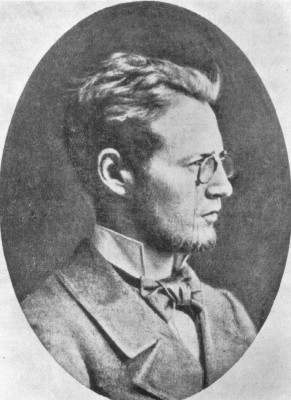|
Krzna
The Krzna is a river in eastern Poland, a left tributary of The Bug River, Bug. The river is long. The watershed area of the Krzna is . The river flows through Poland's Lublin Voivodeship. The Krzna arises from the connection of two water jets flowing in the Łuków Forest: Northern Krzna and Southern Krzna which is considered to be the beginning of the Krzna. The river empties to the Bug near the town of Terespol and the village of Neple, close to the Belarus border near, the city of Brest, Belarus, Brest. A canal connects it to the Wieprz. The Northern Krzna The Northern Krzna is a short river which connects with the Southern Krzna in the town of Międzyrzec Podlaski. Similarly to the Southern Krzna, the river flows from Łuków Forests, center of which was formerly inaccessible Jata marsh and nowadays it is a wildlife reserve of the same name. The Northern Krzna is shorter than the Southern Krzna. However, its watershed area is bigger. During the Pleistocene epoch, the valley o ... [...More Info...] [...Related Items...] OR: [Wikipedia] [Google] [Baidu] |
Wieprz
The Wieprz (, ; ua, Вепр, Vepr) is a river in central-eastern Poland, a tributary of the Vistula. It is the country's ninth longest river, with a total length of 349 km and a catchment area of 10,497 km2, all within Poland. Its course near the town of Łęczna includes the protected area known as Wieprz Landscape Park. The river has its sources in Lake Wieprz, in Wieprzów Tarnawacki near Tomaszow Lubelski, and flows into the Vistula near Dęblin. The Wieprz is connected to another river, the Krzna, through the 140-kilometer Wieprz-Krzna Canal, built in 1954-1961. Because the Wieprz with its wide valley has not been regulated, its nature is very diverse. The meandering river with its oxbow lakes is inhabited by numerous birds, European otters and Eurasian beavers. During the Polish-Soviet War, units of the Polish 4th Army concentrated along the Wieprz, getting ready for the Battle of Warsaw. In September 1939, during the Invasion of Poland, the Battle of T ... [...More Info...] [...Related Items...] OR: [Wikipedia] [Google] [Baidu] |
Międzyrzec Podlaski
Międzyrzec Podlaski ( la, Meserici, german: Meseritz) is a city in Biała Podlaska County, Lublin Voivodeship, Poland, with the population of 17,162 inhabitants . The total area of the city is . Międzyrzec is located near the Krzna river, not far from the border with Belarus. History The first official mention of Międzyrzec Podlaski as a town dates back to 1434, or (alternatively) 1455 and 1477 according to different historical sources. At that time, the newly established town was located along a busy merchant route from Lukow to Brzesc nad Bugiem. Międzyrzec quickly developed: in 1486, a Roman Catholic church was built here, and town's owner, Jan Nassutowicz, received permission for fairs. In 1598, a salt warehouse was opened, the town also was center of beer industry. The period of peace and prosperity ended in 1648, when Miedzyrzec was raided by Zaporozhian Cossacks. During the Deluge (history), Swedish invasion of Poland, the town was ransacked and burned by Swedes, who r ... [...More Info...] [...Related Items...] OR: [Wikipedia] [Google] [Baidu] |
Łuków Forest
Łuków Forest ( pl, Lasy Łukowskie) is the largest forest complex in South Podlachia Plain near Łuków in eastern Poland. Krzna river flows out of the forest. The complex has an area of History Before the Partitions of Poland the forests were the royal wilderness. During the January Uprising the area were used to be a base and shelter of Polish insurgents led by priest Stanisław Brzóska. During the Second World War World War II or the Second World War, often abbreviated as WWII or WW2, was a world war that lasted from 1939 to 1945. It involved the vast majority of the world's countries—including all of the great powers—forming two opposi ..., partisans of the Polish resistance movement also operated in the area. Flora Species of trees in the forest: Nature conservation In Łuków Forest occur two nature reserves: Jata and Topór. Object of the protection are fir forests growing out of range occurring the species. Bibliography * Superin ... [...More Info...] [...Related Items...] OR: [Wikipedia] [Google] [Baidu] |
Łuków
Łuków is a city in eastern Poland with 30,727 inhabitants (as of January 1, 2005). Since 1999, it has been situated in the Lublin Voivodeship, previously it had belonged to the Siedlce Voivodeship (between 1975–1998). It is the capital of Łuków County. The town has an area of 35.75 km2, of which forests make up 13%. Łuków is located on the Southern Krzna river, at approximately 160 meters above sea level. The name of the town first appeared in documents in 1233 (''Castelani nostri de Lucow''). Łuków comes from Old Slavic word ''łuk'', which means "a place located in a wetland". For 500 years Łuków, together with neighboring towns Siedlce and Radzyń Podlaski, was part of Lesser Poland, and was located in the extreme northeastern corner of the province. After Partitions of Poland (late 18th century), it belonged to Russian-controlled Congress Poland. Some time in the 19th century, it became associated with another historical region of Poland, Podlasie. History ... [...More Info...] [...Related Items...] OR: [Wikipedia] [Google] [Baidu] |
Bug River
uk, Західний Буг be, Захо́дні Буг , name_etymology = , image = Wyszkow_Bug.jpg , image_size = 250 , image_caption = Bug River in the vicinity of Wyszków, Poland , map = Vistula river map.png , map_size = 250px , map_caption = Bug River through Ukraine, Belarus and Poland , pushpin_map = , pushpin_map_size = 250px , pushpin_map_caption= , subdivision_type1 = Country , subdivision_name1 = Poland, Belarus, Ukraine , subdivision_type2 = , subdivision_name2 = , subdivision_type3 = VoivodeshipVoblastOblast , subdivision_name3 = Podlaskie, Mazovian, Lublin, Brest, Lviv , subdivision_type4 = , subdivision_name4 = , subdivision_type5 = , subdivision_name5 = , length = , width_min = , width_avg = , width_max = , depth_min = , depth_avg = , depth_max = , discharge1_location= ... [...More Info...] [...Related Items...] OR: [Wikipedia] [Google] [Baidu] |
Neple
Neple is a village in the administrative district of Gmina Terespol, within Biała Podlaska County, Lublin Voivodeship, in eastern Poland, close to the border with Belarus. It lies approximately north-west of Terespol, east of Biała Podlaska, and north-east of the regional capital Lublin. The village lays in the vicinity of Krzna river and Bug river uk, Західний Буг be, Захо́дні Буг , name_etymology = , image = Wyszkow_Bug.jpg , image_size = 250 , image_caption = Bug River in the vicinity of Wyszków, Poland , map = Vi .... The village has a large number of historic monuments and architecture. Caritas relief has operated a holiday resort in Neple. References External linksAdministrative District Web [...More Info...] [...Related Items...] OR: [Wikipedia] [Google] [Baidu] |
Biała Podlaska
Biała Podlaska ( la, Alba Ducalis) is a city in eastern Poland with 56,498 inhabitants as of December 2021. It is situated in the Lublin Voivodeship (since 1999), having previously been the capital of Biała Podlaska Voivodeship (1975–1998). It is the capital of Biała Podlaska County, although the city is not part of the county (it constitutes a separate city county). The city lies on the Krzna river. History The first historical document mentioning Biała Podlaska dates to 1481. In the beginning Biała Podlaska belonged to the Illnicz family. The founder of the city may have been Piotr Janowicz, nicknamed "Biały" (Polish for "white"), who was the hetman of the Grand Duchy of Lithuania. Biała Podlaska was administratively part of the Podlaskie Voivodeship, and then the Brest Litovsk Voivodeship in the Grand Duchy of Lithuania (then in union with Poland).Biała PodlaskaHistoria miasta - Serwis Urzędu Miasta Biała Podlaska Official website. In 1569, Biała Podlaska ch ... [...More Info...] [...Related Items...] OR: [Wikipedia] [Google] [Baidu] |
Lublin Voivodeship
The Lublin Voivodeship, also known as the Lublin Province ( Polish: ''województwo lubelskie'' ), is a voivodeship (province) of Poland, located in southeastern part of the country. It was created on January 1, 1999, out of the former Lublin, Chełm, Zamość, Biała Podlaska and (partially) Tarnobrzeg and Siedlce Voivodeships, pursuant to Polish local government reforms adopted in 1998. The region is named after its largest city and regional capital, Lublin, and its territory is made of four historical lands: the western part of the voivodeship, with Lublin itself, belongs to Lesser Poland, the eastern part of Lublin Area belongs to Red Ruthenia, and the northeast belongs to Polesie and Podlasie. Lublin Voivodeship borders Subcarpathian Voivodeship to the south, Świętokrzyskie Voivodeship to the south-west, Masovian Voivodeship to the west and north, Podlaskie Voivodeship along a short boundary to the north, Belarus ( Brest Region) and Ukraine (Lviv Oblast and Volyn Obl ... [...More Info...] [...Related Items...] OR: [Wikipedia] [Google] [Baidu] |
Terespol
Terespol (; be, Тэрэ́спаль, Teréspaĺ) is a town in eastern Poland on the border with Belarus. It lies on the border river Bug, directly opposite the city of Brest, Belarus, making it a border town. It has 5,794 inhabitants as of 2014. Overview Since 1999 Terespol has been within Biała Podlaska County in Lublin Voivodeship. Between 1975 and 1998 it belonged to Biała Podlaska Voivodeship. The town is a busy border crossing between Poland and Belarus on the European route E30 which links Berlin-Warsaw-Minsk-Moscow. Another crossing into Brest is located at Kukuryki northwest of Terespol. There is also a local train between Brest and Terespol. It comes 3 times a day. The trip takes 18 minutes and is a very comfortable way of crossing border between Belarus and Poland. Terespol features in a novel by the Yiddish Nobel Prize-winning writer Isaac Bashevis Singer, '' The Family Moskat'' (1950), in which the young protagonist, Asa Heshel Bennet, comes to Warsaw fr ... [...More Info...] [...Related Items...] OR: [Wikipedia] [Google] [Baidu] |
Central Statistical Office (Poland)
Statistics Poland (formerly known in English as the Central Statistical Office ( pl, Główny Urząd Statystyczny, popularly called GUS)) is Poland's chief government executive agency charged with collecting and publishing statistics related to the country's economy, population, and society, at the national and local levels. The president of Statistics Poland (currently Dominik Rozkrut) reports directly to the Prime Minister of Poland and is considered the equivalent of a Polish government minister. The agency was established on 13 July 1918 by Ludwik Krzywicki, one of the most notable sociologists of his time. Inactive during World War II, GUS was reorganized in March 1945 and as of 31 July 1947 was under control of the Ordinance of the Council of Ministers (along with the Organization of Official Statistics). The office is divided into several separate branches, each responsible for a different set of data. The branches include the Divisions of Coordination of Statistical Su ... [...More Info...] [...Related Items...] OR: [Wikipedia] [Google] [Baidu] |
Brest, Belarus
Brest ( be, Брэст / Берасьце, Bieraście, ; russian: Брест, ; uk, Берестя, Berestia; lt, Brasta; pl, Brześć; yi, בריסק, Brisk), formerly Brest-Litovsk (russian: Брест-Литовск, lit=Lithuanian Brest; be, links=no, translit=Berastze Litouski (Berastze), Берасце Літоўскі (Берасце); lt, links=no, Lietuvos Brasta; pl, links=no, Brześć Litewski, ), Brest-on-the-Bug ( pl, links=no, Brześć nad Bugiem), is a city (population 350,616 in 2019) in Belarus at the border with Poland opposite the Polish city of Terespol, where the Bug (river), Bug and Mukhavets rivers meet, making it a border town. It is the capital city of the Brest Region. Brest is a historical site for many cultures, as it hosted important historical events, such as the Union of Brest and Treaty of Brest-Litovsk. Furthermore, the Brest Fortress was recognized by the Soviet Union as a Hero Fortress in honour of the defense of Brest Fortress in Jun ... [...More Info...] [...Related Items...] OR: [Wikipedia] [Google] [Baidu] |
Tributary
A tributary, or affluent, is a stream or river that flows into a larger stream or main stem (or parent) river or a lake. A tributary does not flow directly into a sea or ocean. Tributaries and the main stem river drain the surrounding drainage basin of its surface water and groundwater, leading the water out into an ocean. The Irtysh is a chief tributary of the Ob river and is also the longest tributary river in the world with a length of . The Madeira River is the largest tributary river by volume in the world with an average discharge of . A confluence, where two or more bodies of water meet, usually refers to the joining of tributaries. The opposite to a tributary is a distributary, a river or stream that branches off from and flows away from the main stream. PhysicalGeography.net, Michael Pidwir ... [...More Info...] [...Related Items...] OR: [Wikipedia] [Google] [Baidu] |




